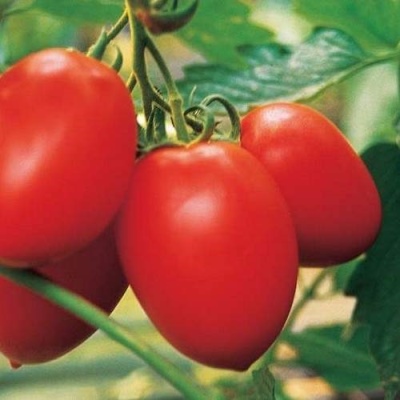
- Authors: HM. CLAUSE S.A., France
- Year of approval: 2013
- Name synonyms: Colibri
- Category: hybrid
- Growth type: indeterminate
- Appointment: fresh consumption
- Ripening period: mid-season
- Growing conditions: for open ground, for film greenhouses
- Transportability: Yes
- Bush size: tall
Plant breeders of Western European countries make no less effort than their Russian or American counterparts. The result of one of these developments is the Hummingbird tomato. Careful familiarization with it allows you to achieve considerable benefits in your beds.
Breeding history
Hummingbird is a French-bred tomato. It was officially allowed to be planted in summer cottages and garden plots in 2013. The project was carried out by HM. CLAUSE S. A. It should be emphasized that this is a hybrid plant, that is, obtained by crossing.
Description of the variety
The culture has a completely official synonym - Colibri. This variety belongs to the indeterminate group of plants. Growing is recommended both in the open field and in greenhouses under plastic wrap. The bushes grow to a large size and develop vigorously. The formation of thick stems and large green leaves is characteristic.
It is also worth highlighting the excellent resistance:
- verticillosis;
- cracking of the fruit;
- tobacco mosaic;
- fusarium wilting;
- extreme weather changes.
The main qualities of the fruit
It is important to emphasize that according to the official description, Hummingbirds are suitable for transportation over a relatively long distance. Unripe tomatoes are green. They will not have any spots in the area of the stalk. When ripe, the crop also traditionally turns red. The average fruit weight is 0.116 kg, which is quite a decent indicator.
The shape of a hummingbird tomato resembles an ordinary ellipse. He has ribs, but they are rather weakly expressed. From 8 to 10 berries develop on 1 brush. It is characteristic that the branches are covered with inflorescences of a simple type. The peduncles of this variety are invariably articulated.
Taste characteristics
The use of the hummingbird crop is possible mainly fresh. The taste notes the presence of both sweet and sour notes. They are intertwined into a completely harmonious ensemble.
Ripening and fruiting
The variety belongs to the mid-season category. Fruiting continues for a long time. It is stated that in greenhouse conditions it will last from June to October inclusive. The end puts only a worsening of the weather. It is also worth emphasizing that it is possible to harvest fruits outdoors in August.
Yield
The variety belongs to the highly productive group. The ability to harvest 3.4 kg of tomatoes per 1 m2 is declared. Much depends, of course, on agricultural technology and on the actual weather, which greatly limit the achieved result. The heat resistance of this variety is undoubted, but still one has to take into account objective limitations.
The timing of planting seedlings and planting in the ground
Sowing seeds in containers should be carried out from January to March, inclusive, if it is planned to breed tomatoes in greenhouses. Sowing for further cultivation in the open field should be done in March or April. The horticultural situation again dictates the exact date.

Growing tomato seedlings is an extremely important process, because it largely depends on whether the gardener will be able to harvest at all. All aspects must be taken into account, from seedbed preparation to planting in the ground.
Landing scheme
For 1 sq. m it will be possible to plant 2-3 plants. More precisely, it will be necessary to determine their number yourself. The priority may be both growing the largest number of bushes and simplifying planting maintenance.

Growing and care
Removing stepsons and tying bushes to supports will be a strictly mandatory measure. It will also be very difficult to do without giving the plant the necessary shape. Usually hummingbird bushes are bred in 2 stems. With fewer or more shoots, you cannot count on a good result. Usually the crop is harvested unripe in order to forestall late blight infection.
Despite its resistance to the main part of tomato pathologies, this variety can suffer from insect pests. Therefore, protection from them will be strictly mandatory in any case. The use of drugs that stimulate growth is beneficial. Mineral-based fertilizers are used once every 14 days, and boric acid is used for foliar feeding.




A plant needs different micronutrients at each stage of growth. All fertilizers can be divided into two groups: mineral and organic. Folk remedies are often used: iodine, yeast, bird droppings, eggshells.
It is important to observe the rate and period of feeding. This also applies to folk remedies and organic fertilizers.


Growing regions
Traditionally, this tomato is already advised to plant throughout Russia - from Kaliningrad to Petropavlovsk-Kamchatsky and from Adler to Murmansk. However, in each specific area, the approach will be different.You will have to carefully analyze whether it is worth planting plants in a greenhouse or whether you can get by with growing in open ground.
Review overview
Ratings for the Kolibri cultivar are quite favorable. This plant really allows for bountiful harvests. The harvested fruits are great for harvesting for the winter. Planting maintenance does not constitute any significant work. The storage of the picked berries is also organized without any problems.

























































































